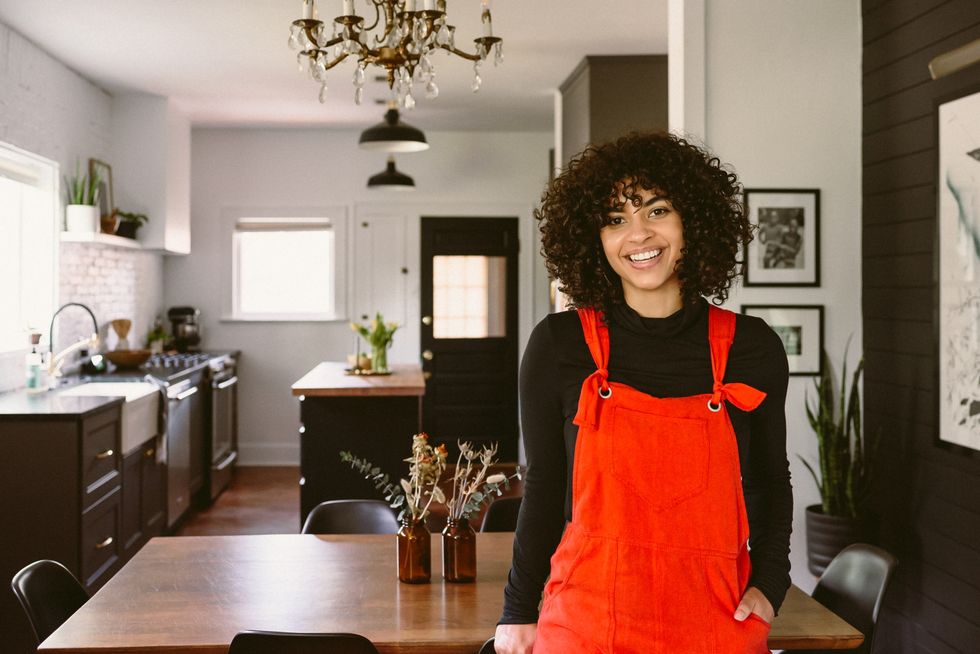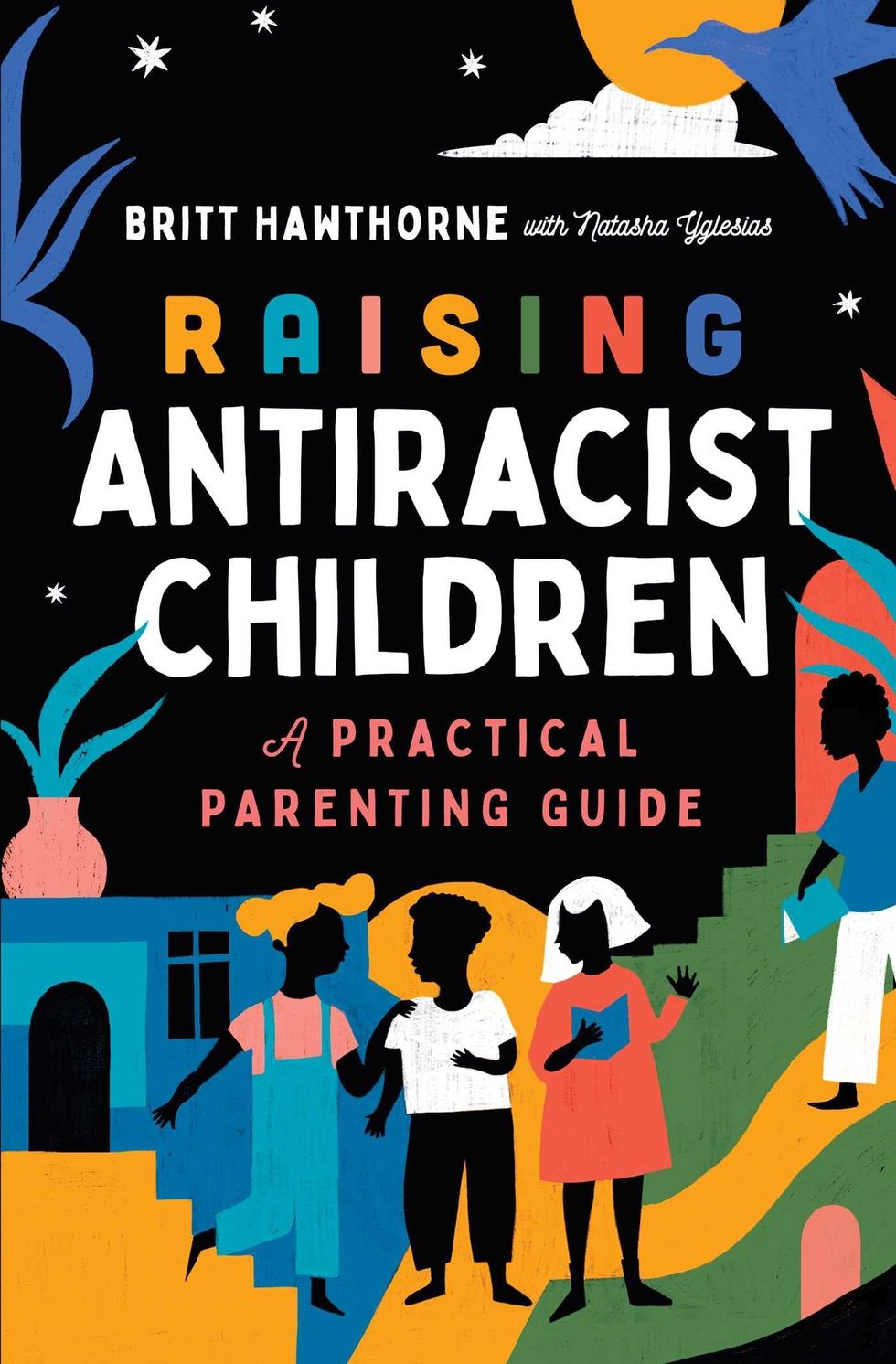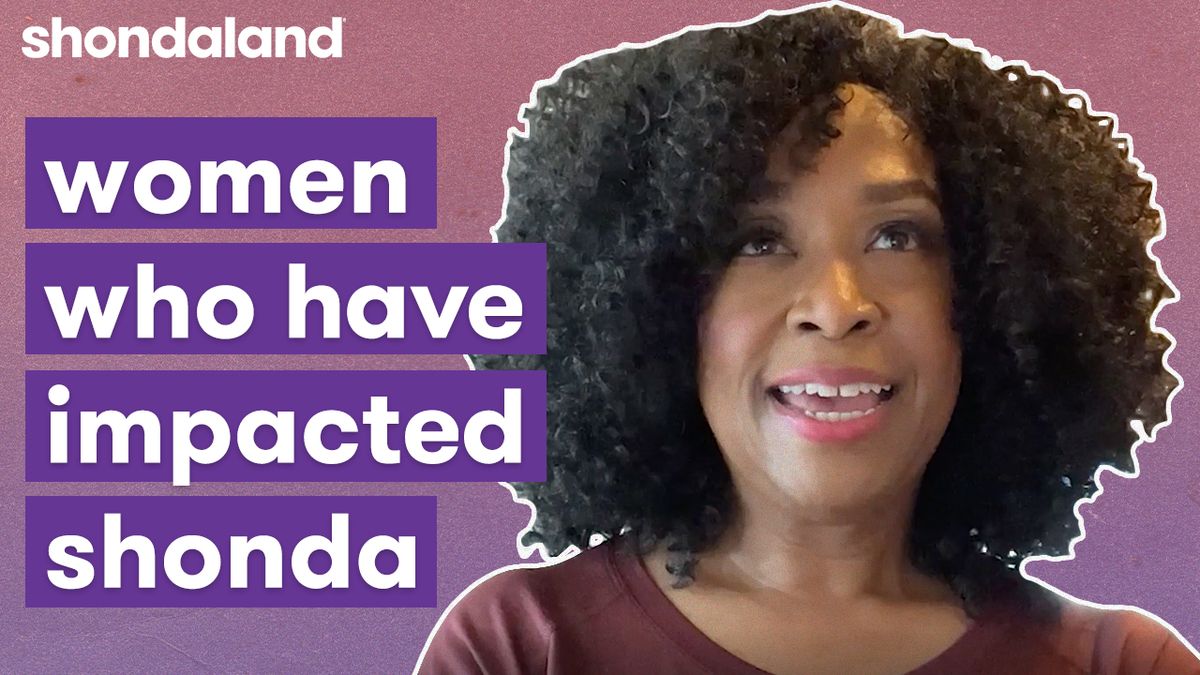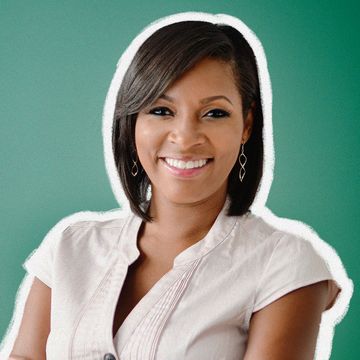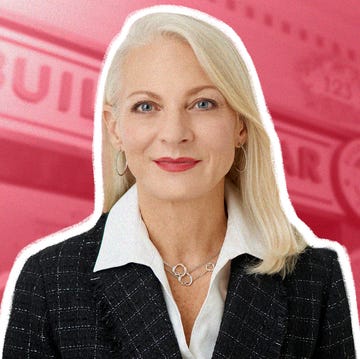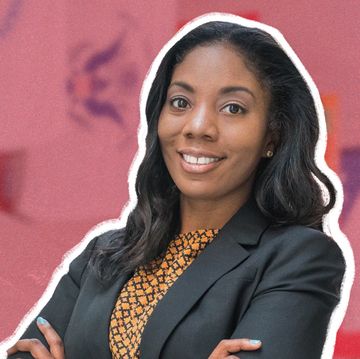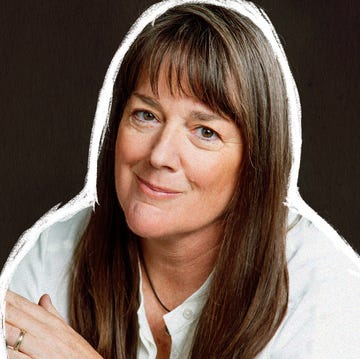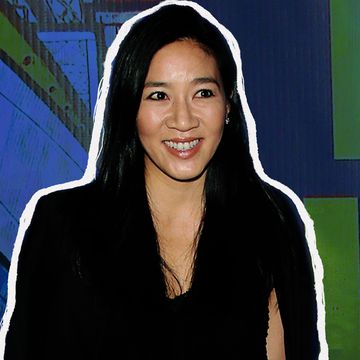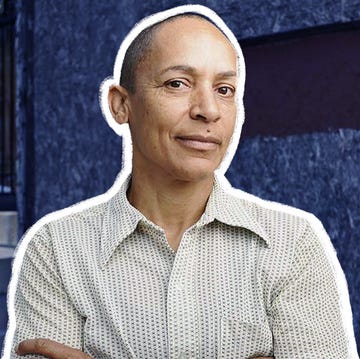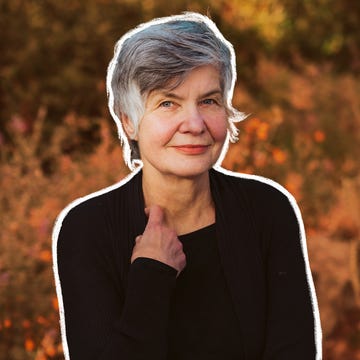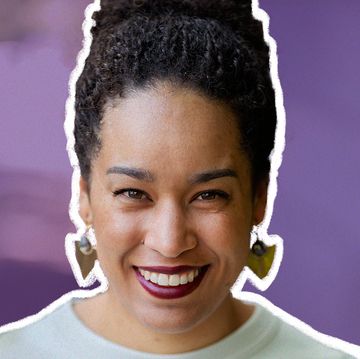In the ongoing Shondaland series Head Turners, we meet interesting women from every facet of life who are crushing it in their careers. From artists and tech mavens to titans of the boardroom, these women are breaking barriers, and they’ll share how you can too.
Britt Hawthorne always knew she wanted to be a teacher. She followed in her mother’s footsteps and started working in the school system in Houston, Texas, after graduation. But when her 5-year-old son experienced racism firsthand in the classroom, Hawthorne realized that the system was not serving her family. In what she calls the “hardest decision of my life,” she began homeschooling him.
Hawthorne, who identifies as Black biracial, also left the school system and devoted her career to helping other educators, caregivers, and organizations like PBS, Rice University, and Association Montessori Internationale to address racism.
Now, she’s the co-author of Raising Antiracist Children: A Practical Parenting Guide. The book provides anyone who wants to bring children up as anti-racist with the tools they need to address the toughest questions, the same ones Hawthorne grappled with in her own life.
Shondaland recently spoke with Hawthorne about the challenges of understanding identity, educating educators, and establishing boundaries between her work and personal life.
HOPE REESE: What was school like for you?
BRITT HAWTHORNE: I was born and raised in Illinois, and I have a white mom and a Black dad. I grew up in a typical Midwestern town. We were working class: My dad worked at the local car factory, and my mom was a schoolteacher, so I am a second-generation schoolteacher. When I was in elementary school, I went to a predominantly white school. In middle school, I got into the gifted program. That program was even more white. I remember one time going on a field trip, and the gifted-program students were able to get on coach buses to go 15 minutes down the road, whereas the general-ed students had to go on school buses. That was an inequality that existed.
My parents raised me to be very race-conscious. I do not remember a day when we did not talk about race. But I never actually learned any kind of justice skills or tools once you identify racism. I grew up in a very assimilationist family: “That is the way that it is. Keep your head down. Do the best you can. Then, hopefully the seeds of your labor will grow.” I was educated to do that as well. When teaching, I realized that this tactic was not getting us anywhere. It was not closing any kind of gap.
We think that if we can just get the people who are different and put them together that it will somehow eradicate inequity or racism. Oftentimes, how diversity work is set up is motivating people who experience discrimination instead of anti-racist work providing the tools to identify discrimination and dismantle it.
HR: What conversations did you have growing up about racism?
BH: When I was 11 or 12 years old, we were taking state testing. Back in the day, you had to fill in the bubbles like your name and racial identity. Being biracial, there was not a spot to fill in, so I left it blank. Later, I told my mom, “I’m not sure what I’m supposed to do. There wasn’t any box for me.” My mom was like, “Oh, that’s a great question. You are a Black girl who has a white mom.”
It felt like my mom was saying, “I’m denying you,” in some way. But she was like, “I do not think you fully understand what it means to be a part of a racial identity. The way the world will experience you.” If I kept Black as a racial identity, I am saying I present as a Black woman, and people will experience me as a Black woman, and I align myself with what matters politically to Black people. I do not want to deny one side of my family, so it is about how I represent both, and everything that I am.
HR: When your 5-year-old son was told by a teacher to “shut up,” you pulled him out of school. How did you come to that decision?
BH: A few years before that, I had started getting my feet wet into anti-racist work, trying to figure out what exactly is the problem and what are the solutions when it comes to racism. I got deeper into the work of anti-racism to understand that it is a systemic problem — and that education is one of the systems. I started to understand how deeply embedded racism is in education.
From that newfound lens, I started noticing things that I had normalized before: the whitewashing of curriculum, uncomfortability of teachers talking about racism, disciplinary differences that happened in school.
As I’m noticing all of these things, I am also noticing problems with how our children are being educated. I noticed my son Cobe was spending a lot of time working with Play-Doh, handwashing, doing a lot of activities, but not spending a lot of time on academics. When it came to his behavior, it was very developmentally appropriate, like not standing still in line or having outbursts. We had a lot of meetings with the lead teachers, and I asked for more context about what he was doing in the classroom and if I could observe.
After having those conversations and observing the classroom, I started to see the differences in how they were treating Cobe versus the other students. We were thinking of switching classrooms or maybe even schools. When Cobe said that his teacher told him to “shut up,” we asked the teacher, “Can you give me some context about what happened?” The confidence in admitting, “Yes, I told your child to shut up,” was the moment that felt beyond mediation.
HR: As a teacher, how did it feel to take him out of the system?
BH: I loved teaching. I loved my family, my learners, and I enjoyed going into the classroom every day. For the most part, my children also loved their school and friends. It was very hard because it meant that I had to take a step back and be a stay-at-home mom. Being a working mom was an identity that made me very proud.
It was also financially difficult. My husband is a barber, and I secure all the benefits, so that meant we chose to give up our health care and life insurance policy as well as go down to one income that's dependent on the service industry. That was scary. We just got health insurance last year. But if the public school was not serving our children, we needed to do something radical.
HR: How did you transition from teacher to consultant?
BH: When I was a devoted teacher, I went to teacher conferences and would talk about what I was doing in my classrooms — a lot of it was about mixing our curriculum with anti-bias and anti-racist work.
Once, the principal in one of those conferences contacted me and said, “Hey, I heard that you are out of the classroom. Do you think you could come to my school and work with my teachers for a week and show them what you have presented at a conference?” I was like, “Oh, no. I am not a consultant. I’m just a teacher.” She said, “You can call yourself whatever you want, but I really would like you to come to my school and work with my teachers and show them how you are connecting the two.” That was my first consulting job back in 2017.
HR: How do you explain identity to those who might not fully understand it?
BH: It took me many years to land on Black biracial. Having a white racial identity brings up a lot of feelings for a lot of people. When people look at the United States, white people did not [arrive] as white. They came as their ethnic groups, nationality, culture, and ideas. Then, they either were forced into assimilation or chose assimilation.
Because that history is long, and a lot goes into being white — passing or accepting whiteness — it was tough for me to only say I am biracial. It felt like I wasn’t proud to be Black because anti-Blackness is so pervasive. At the same time, my presentation as only a Black woman was not genuine because it’s not stating my full reality. Leading with Black is, for me, a signifier that I’m proud of being Black. And then being biracial is being honest about who I am.
HR: What is the trickiest part about explaining racial identity?
BH: The reason it can be tricky is that people use different definitions. Often, we’re just missing each other in a conversation. While one person might be talking about what they think is racial identity, what they really might mean is nationality and ethnicity. There’s a lot of inaccuracy.
The other thing that can be very tricky is to recognize the social identities that we have been operating under. For me, it is important to always be aware of my social identity so that when I’m in a community, I can think about whether my social identity is either leveraging privilege or leveraging discrimination.
I am cisgender, queer, upper middle class, Black, biracial, currently non-disabled, and neurotypical. Those are just a few social identities.
HR: When talking about your different identities, such as cisgender and queer, do you see them as part of the same conversation? Or does that complicate the race issue?
BH: It is all a part of the same conversation. Liberation should not be conditional or exclusionary to a group of people.
HR: What would you say are the toughest parts of your job?
BH: The toughest part of my job is my perfectionism, worrying that I might say the wrong thing. The second hardest part is the real fear that I am not safe. I am okay when it comes to discomfort — when somebody says something, cries, or shuts down — I am okay with all of that and responding with a lot of empathy. It’s different when I’m in an unsafe situation. That hasn’t happened yet, but there’s a real fear of what happens if someone gets so upset, and they want to have a physical altercation. Or a neo-Nazi shows up at a public event.
HR: Your work is so personal. How do you create a boundary?
BH: My professional name is Britt Hawthorne. But someone who knows me from my family will use Brittany. It helps to have that whenever my husband or dad is talking to me. It’s just a really beautiful reminder when I remember who I am and where I came from.
The second thing is confidentiality, making sure I ask my family’s permission whenever I post about them or share their stories.
Lastly, I am in this stage of life that I call re-parenting. Growing up, my parents would put me in a lot of activities like ballet, volleyball, swimming, or soccer five days a week. Now, I am trying a lot of new activities like spin class or rollerblading. I’m putting myself out there saying, “Hey, you haven’t discovered all of the parts of you.” I am treating myself as a mystery, still trying to discover or be rediscovered. That’s bringing me a lot of joy.
Hope Reese is a freelance journalist whose work has been featured in The New York Times, Vox, and The Atlantic. Follow her on Twitter @hope_reese.
Get Shondaland directly in your inbox: SUBSCRIBE TODAY

